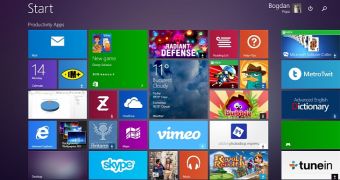Microsoft continues efforts to bring more affordable devices to the market, but the company claims that the existing ones already available to consumers are quickly gaining ground, with some even taking over the education sector thanks to their state-of-the-art features.
Wole Moses, member of the Microsoft Worldwide Public Sector Team, said in a blog post published today that the software giant and its partners have managed to bring several innovative devices that can easily address the needs of teachers and students alike.
Dell’s Latitude 13, Lenovo’s ThinkPad Tablet 2, the Asus T100 and the Toshiba NB15t are all devices capable of providing a unique experience via touch-optimized features and support for the commonly-used formats and technologies.
For example, all Windows tablets can access Flash-based applications which have been developed by schools and organizations worldwide and cannot be used on Android and iPads right now.
“Windows 8 supports the widest breadth of education content available, including Adobe Flash-based education websites and content; fast, fluid, and immersive touch apps through the Windows Store; and Microsoft Office—the world’s leading productivity software. All while still running any education software that works with Windows 7,” Moses explained.
At the same time, Microsoft says that it’s still working with partners to expand the product lineup comprising affordable tablets and the recent improvements it made to the Windows platform are specifically developed to support these efforts.
“Microsoft has worked closely with its device partners to ensure schools have the widest breadth of form factors to choose from without unnecessary features driving up costs. Improvements contained in Microsoft’s most recent update enables a fluid Windows experience even on new very low cost devices. While running Windows 8 means schools operate efficiently by utilizing the same user interface, education content, apps, and infrastructure to manage all devices,” he continued.
While affordable devices are undoubtedly pretty helpful for both teachers and students, they are also supposed to support the adoption of modern Windows, a platform that has until now failed to gain traction and bring more users on board.
In addition, Microsoft’s cheap devices are meant to move more users from Windows XP to the new version of Windows, which is clearly more secure and faster than the operating system launched 13 years ago. Windows XP is still installed on 28 percent of computers worldwide and the high costs of the transition to Windows 8.1, which also involved hardware upgrades, is said to be one of the main reasons why users refuse to jump ship.

 14 DAY TRIAL //
14 DAY TRIAL //